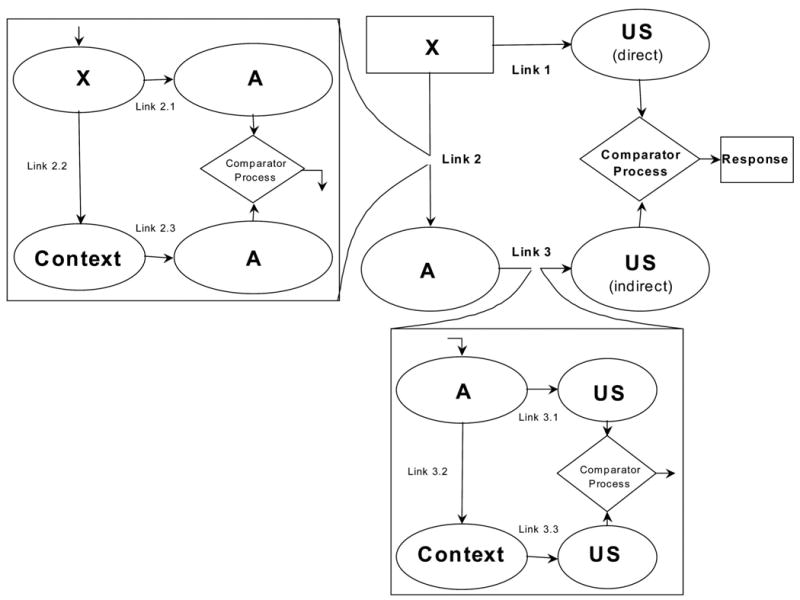Figure 1.

A schematic representation of the extended comparator hypothesis (Denniston et al., 2001) applied to Pavlovian conditioned inhibition. Here, the training excitor A is depicted as the target cue’s first-order comparator stimulus and the training context serves as the target cue’s second-order comparator stimulus. As it applies to differential inhibition, the context replaces A as the first-order comparator stimulus, given the absence of an X–A association, and there is no significant second-order comparator stimulus. Rectangles are physical stimuli and responses, ovals are stimulus representations, and the diamond is the actual comparator process.
